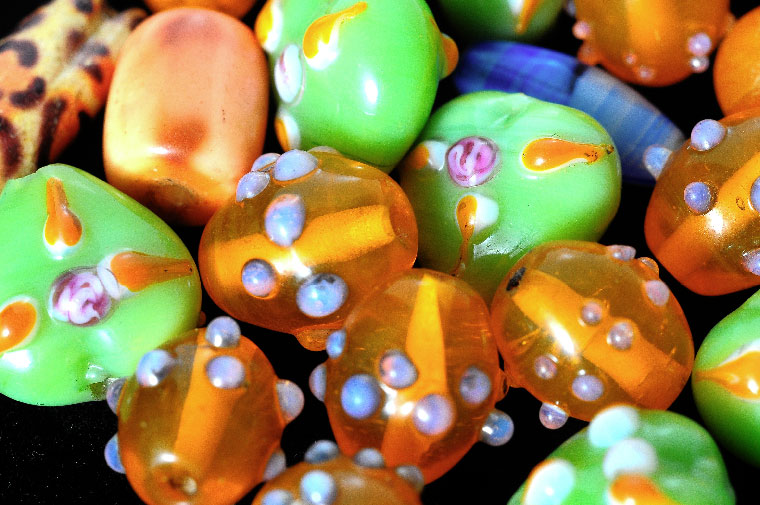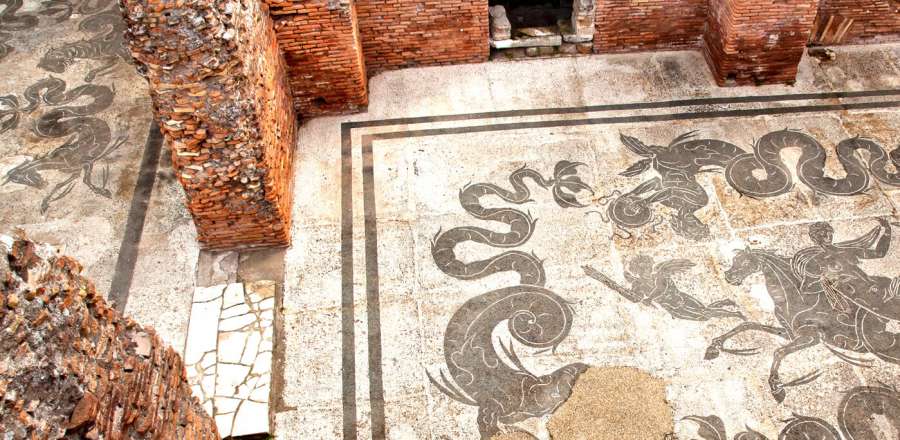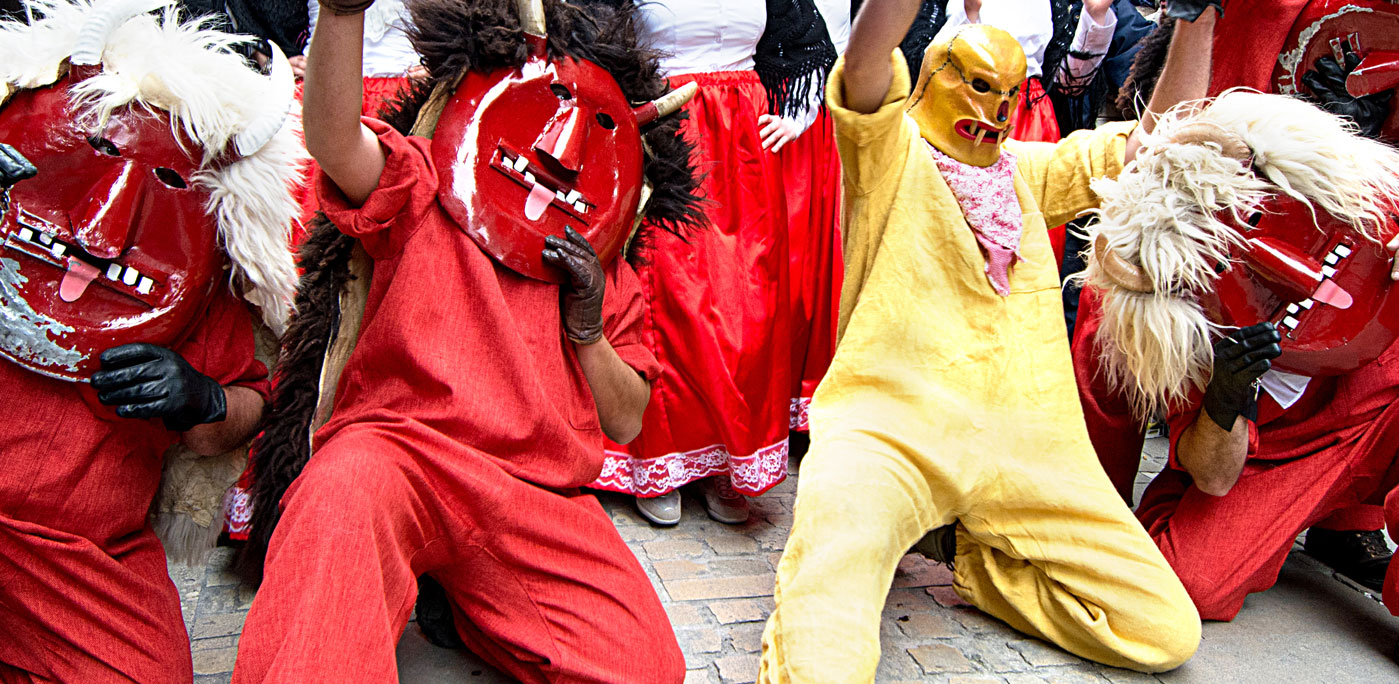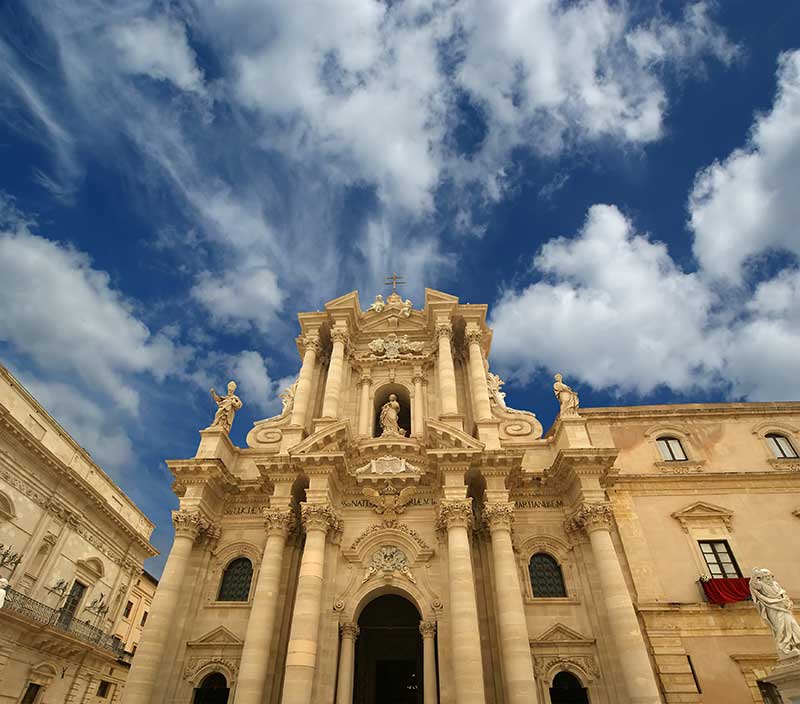Murano glassmakers created Gallileo’s first telescope lenses. They decorated the palaces of Europe with their breathtaking chandeliers and glittering mirrors. And their glassblowing still draws thousands of visitors each year to the Venetian lagoon. But away from the blistering hot furnaces and busy showrooms, a small army of artisans is working to preserve a lesser-known tradition of glass bead production. So although Venetian beads are no longer as highly valued as they once were, or traded as currency by explorers such as Marco Polo, Murano’s perlera bead makers continue to use the same old methods to create beautiful beads and baubles for jewellery, decoration and art. If you’re not familiar with it yet, this is the magical world of Venetian glass bead making.
The ancient craft of glass beads is one of the oldest human arts. It dates back over 5000 years to Mesopotamia, in the Middle East, where softened glass was first wrapped around metal rods to form ornaments to be worn. The ancient Egyptians also used glazed faience (ceramic) and glass beadwork as decoration on ceremonial garments and those of high-ranking or religious officials. Glass beads were very highly prized.
Over time the process gradually evolved until glass-molding became glass blowing. Artisans in Rome and the Middle East began to shape molten silica by blowing into it through a blowpipe to make cups and bowls, just as glassmakers do today. And the technique was also applied to bead making, enabling larger scale production.
Clearly the technology of bead making dates back much further than Venice’s history. But thanks in no small part to the city’s strong trade links with eastern and Mediterranean cultures, the expertise was brought to the city early on in its history.

The earliest evidence of glass making in Venice dates back to 8th century furnaces found on Torcello, the first lagoon island settled. Local legend, however, has it that bead making took a little longer to arrive.
In fact the story goes that it was the 13th century merchant and explorer Marco Polo who personally inspired the development of bead making in Venice, bringing beautiful glass jewels back from Asia that Venetian artisans took to reproducing and emulating.
Whether the story is true, just another of Marco Polo’s famous exaggerations, or part of the fanciful fable that grew up around him is unclear. What is certain, however, is that Venetian bead making grew quickly, turning the tiny island of Murano into a prominent bead producer.
And just like the earliest eastern and Egyptian beads, Venetian beads were a highly prized, rare and valuable commodity. Not only were they sought after, they were also easy to transport too. So Venice’s beads became an essential element of early exploration with strings of beads used as gifts or currency in exchange for products, and sadly people, from Africa, Asia and the newly discovered Americas. Basically, wherever the trade ships went, Venetian beads went too, to be traded, treasured and turned into bead art by the recipients.
Then, as now, bead making in Venice was largely a woman’s work due to the finesse required. And there were numerous delicate and decorative ways to make a bead depending on the process, materials or style employed.
Beads could be made from thin tubes of molten glass, or by winding and molding molten glass around a metal rod. At their simplest, they were monochrome, taking just a few seconds or minutes to make. But the addition of metals, minerals and artistry introduced colour, pattern and design into the heart of the glass globules. So whilst the glass blowing men were sculptors making candelabra, cups and statues, Murano’s bead makers were more like painters. They used delicate colored glass rods to paint swirls, curls, flowers and even miniature mosaics inside the tiny beads. The most complex designs, involving several layers to create little galaxies inside the transparent crystal globes could take up to an hour to make. Hence their high price and value.
So from the almost microscopic seed beads prized in New Guinea and North America for use in headdresses and bracelets, to the glorious marble-sized beads favored by the Ashanti people of West Africa, Venetian beads were an essential part of world trade from the 1500s onwards. And the trade in beads continued for centuries. Indeed the Victoria and Albert Museum in London holds strings from a London merchant whose import-export firm operated as recently as 1913.
Today, Venetian bead making is still largely done by women. But although the techniques have barely changed, the volume of work most certainly has. In the 1930s, there were around 30 companies employing hundreds of women to make glass beads in Murano. Less than one hundred years on, however, artisans like Muriel Balensi or impiraressa bead stringers like Marisa Convento work alone making one-off art and jewellery whilst much of the mass production has moved elsewhere.
So next time you’re in Venice and fancy a day trip to Murano, why not follow up your furnace visit with one to a perlera like the magical Muriel or Marissa. You’ll see Venetian beads just like the ones traded in the Americas, or used in beaded African headdresses, or used as fringing on Gatsby-style flapper dresses in the 1920s. And thanks to the small army of dedicated artisans, Murano beads continue to be used to decorate clothes, bags, shoes and jewellery just as the ancient Egyptians, South Americans and Asians once did. But these days you’re not just buying a trinket to embellish your outfit, you’re buying a little bit of history too. Now that’s what I call a real travel story to tell your friends when you get home!































